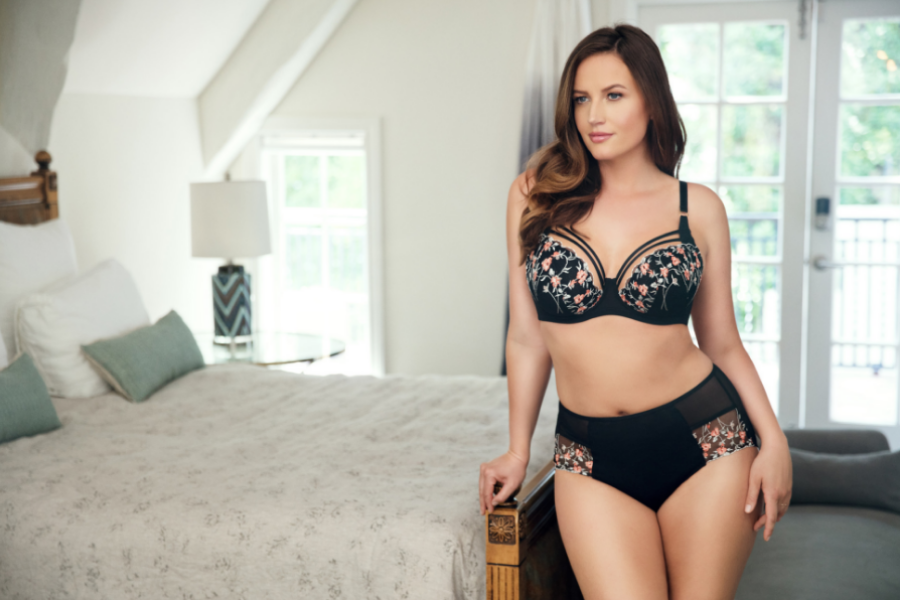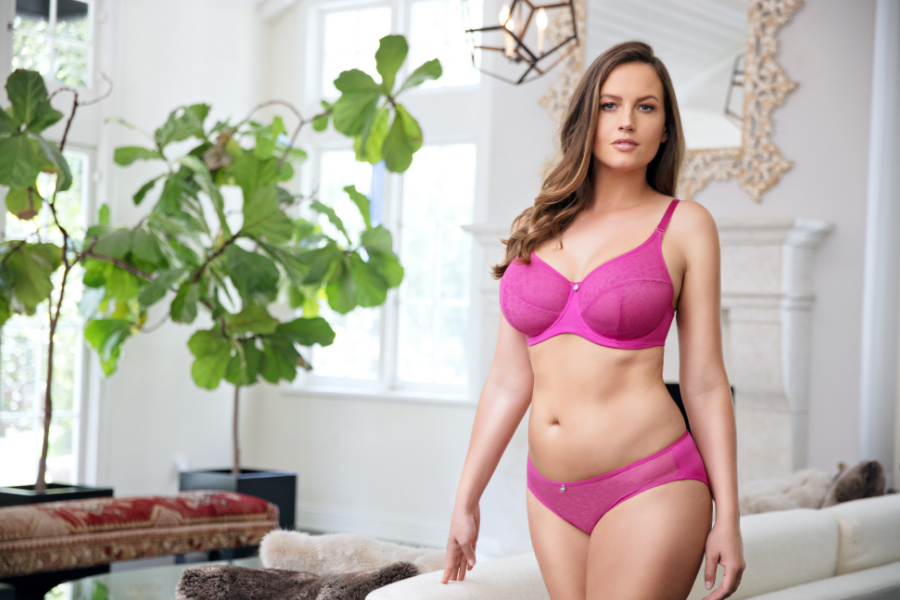4 Surprising Facts About How Bras Are Made
Bras do a lot of heavy lifting. Not only do they hold our breasts in place, but they also support them, and even provide some level of shaping. So it makes sense that they are also one of the most complex garments to make. A lot of time, effort, and thought go into the design and manufacturing of a bra — especially those produced by high-quality brands. And they’ve come a long way over the years, too. As designers and brands learn more about women’s needs and how bras can function most effectively, bras have become more and more intricate.
Read on for a deeper dive into how bras are made. The more you understand about what it takes to bring each and every design to life, the more you’re bound to appreciate these life-changing little unmentionables.
1. The first bra was made out of handkerchiefs.
The original bra, which was invented in 1914, looked quite different from the ones we wear today. According to The Atlantic, Mary Phelps Jacobs first created the brassiere when she realized she needed an undergarment that would be less bulky under her dress for a debutante ball. The socialite was only 19 years old.
While getting ready for the ball, she was presented with a problem: The embroidery on her corset kept peeking out from under her gown near her bust. She instructed her maid to bring her a couple of handkerchiefs and some pink ribbon, and the two women quickly sewed the materials together. The result? Jacobs was not only more comfortable and able to dance more freely (thanks to the absence of boning) but achieved a sleeker silhouette with her gown. Her invention made such a splash at the ball, and later, more society affairs, that she constructed a few more for friends. Finally, she received a patent on Nov. 3, 1914. According to The Atlantic, she described it as “a garment which is characterized by extreme simplicity by freedom from bones so that it may be finished with laces or embroideries for wear beneath a sheer waist or diaphanous gown, and which when worn is both comfortable and cool and so efficient that it may be worn even by persons engaged in violent exercise such as tennis.”
2. There are many steps before manufacturing.
Before any cutting or sewing happens, a bra goes through a multitude of steps during the design process. Made How reports that first, prototypes are drawn up, and then after that, the pattern pieces are designed (often with the help of computerized programs). The cups and panels, core components of the bra, are typically cut out of cardboard with a computerized cutter. Once the prototype is put together, any necessary tweaks and modifications can be made. After the prototype has been finalized, it typically goes through lab testing to ensure the accuracy of sizing and quality. It is then typically manufactured in a smaller quantity for testing by designers, marketers, etc. before it’s mass produced and available for purchase.
Related: Here’s Why Bras Cost What They Do

Sandrine Plunge Longline Bra in Cameo Rose | Matilda Contour Plunge Padded Bra in Bisque | Lucie Unlined Wire Bra in Barely Pink | Carole Unlined Wire Bra in Desert Flower
3. A bra contains upwards of 20 parts.
When you think of a bra, you probably think of the main components: The cups, band, center gore, straps, etc. And indeed, each and every one of those components has a special and important purpose. Typical bras feature around 20 components, but a bra can feature as many as 50 components depending on the style. For example, a cut-and-sew bra may have more components than a basic seamless t-shirt bra with molded cups because the cups of the cut-and-sew bra contain multiple panels. Additionally, some bras (particularly those in larger sizes or specifically geared toward full-busted women) have more hook-and-eye closures on the back of the band for added support. Then there are other components, like the buckles on the straps that allow for adjustability.
4. Molded bras require multiple machines and intricate technology.
There’s no denying that molded bras have many benefits. Not only do they offer a smooth, seamless look under your form-fitting knits, but they can also offer superior shaping for your breasts. As it turns out, making a molded bra is a pretty complex process. Stitch Diary reports that first, the cup material is held inside a mold at a very high temperature to achieve a particular shape. Two machines are used for molding: the bullet head molding machine is used on (synthetic) fabrics, while the contour molding machine is used on the foam that’s often used in molded cup bras. With a bullet head molding machine, a heated bullet head is pushed downwards on the fabric, which rests on an open plate. A combination of pressure and heat are maintained for roughly a minute to produce the desired shape. A contour molding machine, meanwhile, features a pair of heated metal molds. The flat foam sheets are stretched out and compressed between them at a high temperature for about a minute.
Now that you know how much work goes into your beloved bras, hopefully, you’ll have a deeper appreciation for them. While every brand’s process is unique, one thing is true across the board: A well-constructed, high-quality bra requires many thoughtful design and manufacturing decisions — which is why the price tag is typically well worth it.
Related: The True Cost Of Buying Cheap Lingerie

Sandrine Unlined Wire Bra in Cameo Rose
We Highly Recommend
Whether you’re shopping for new everyday bras or lingerie for a special occasion, it’s always a good idea to seek out a second opinion. We know how hard it is to find bras that fit well and feel good, especially when you’re doing it on your own. If you’ve ever felt unsure about your bra size or you just don’t know where to go to find good bras, it’s time to let a bra fitter help.
Many specialty lingerie boutiques offer bra fittings. Their expert bra fitters will take the pain and frustration out of bra shopping and do all the work for you. Even better, their product knowledge can save you time and money. Plus, they know where all of the best bras are hiding.
If you’ve struggled with finding bras in the right size, it’s time to make a change. Visit our specialty store locator to find a store near you and schedule an appointment.
Happy bra shopping!






